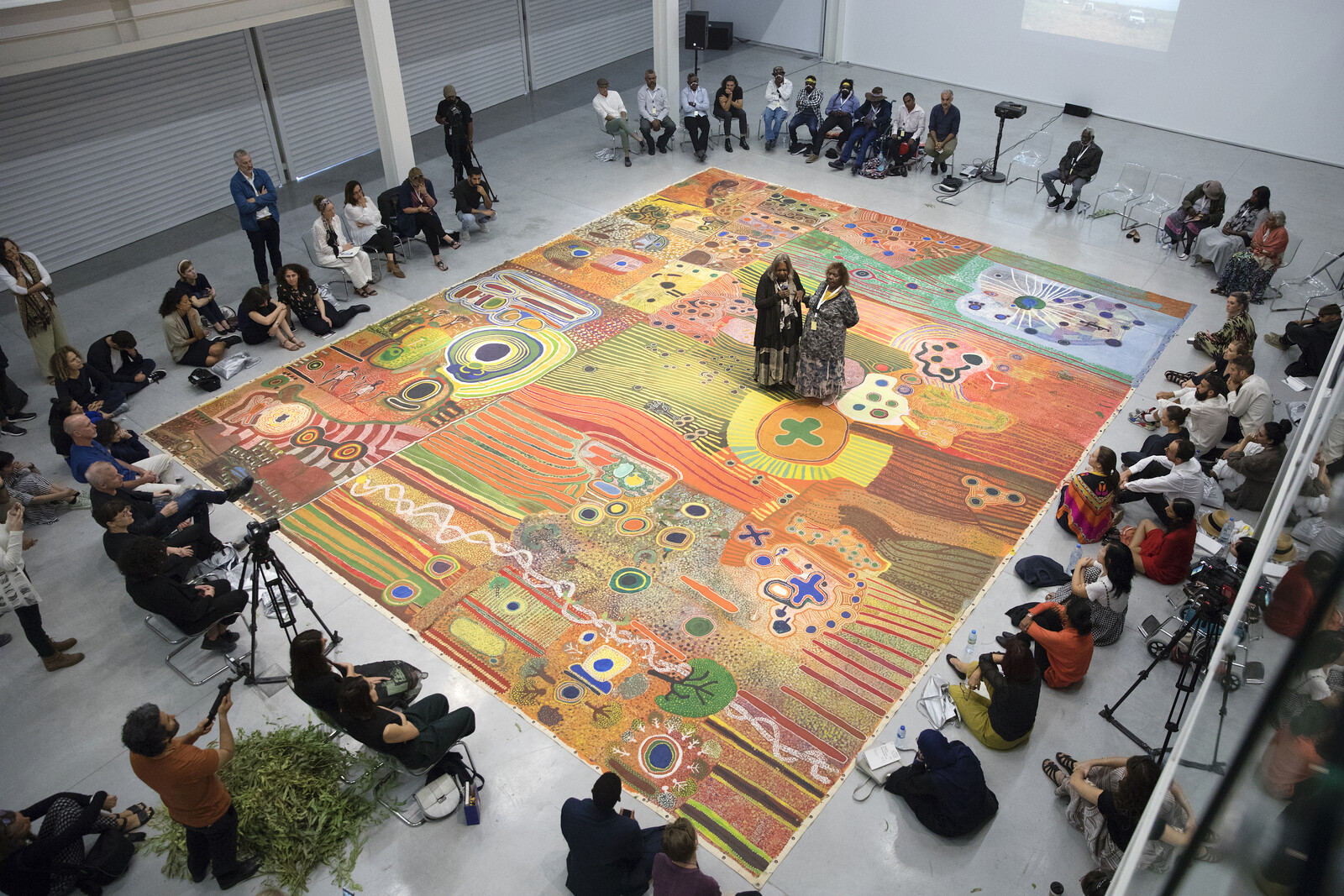Categories
Subjects
Authors
Artists
Venues
Locations
Calendar
Filter
Done
December 8, 2023 – Review
2nd Sharjah Architecture Triennial, “The Beauty of Impermanence: An Architecture of Adaptability”
Nick Axel

The second Sharjah Architecture Triennial—featuring twenty-nine architects, artists, and designers across two main venues (the Al Qasimiyah School and Old Al Jubail Vegetable Market) and a handful of off-site locations—reckons with the cultural and ecological legacies of colonialism and modernity. The work shown does not, in the words of its curator, the Nigerian architect Tosin Oshinowo, simply acknowledge a wrong or apologize for the past. Instead, the contributions demonstrate modes of practice that build new worlds from the ruins of the present. Ideas of “impermanence” and “adaptability” here describe creative responses to conditions of scarcity that draw on ancestral ways of knowing and resourceful forms of making, and “beauty” as a celebration of survivance.
This triennial is in many ways a spiritual successor to Lesley Lokko’s international exhibition at the most recent Venice Architecture Biennale, “The Laboratory of the Future.” Beyond the handful of contributors to appear in both, in these exhibitions architecture is often a starting point, theme, and subject more than an end with pre-defined means. This approach liberates the exhibition from the representational conventions of architectural media (drawings, diagrams, models, maps, and photographs) in favor of immersive installations, sculptural works, films, and more that overcome the alienating …
November 23, 2019 – Review
1st Sharjah Architecture Triennial, “Rights of Future Generations”
Melissa Gronlund

The first Sharjah Architecture Triennial brings to the dusty city an art and architecture crowd with varying expectations. Architecture is conceived here in its wider sense—urban studies, environmental sustainability, design—and curator Adrian Lahoud, the dean of the architectural school at the Royal College of Art in London, has widened it further, curating an inclusive and deliberately experimental exhibition.
Lahoud’s project, “The Rights of Future Generations,” rests on the premise that, as Lahoud put it in an introduction to one of the presentations, fighting for the environment is not a new trend out of London and New York, but something which “black and brown people have been doing for the last century.” Throughout the triennial, representatives from a variety of indigenous communities—people coming from regions as diverse as the Chilean mountains, the Great Sandy Desert of Australia, and stretches of Upper Egypt—and researchers from threatened or developing communities in places such as Gaza, Bangladesh, Senegal, and Iran presented strategies of adapting to climate change and ongoing colonialism in talks, performances, and exhibitions. Importantly, the triennial aims for the sweet spot between research and activism, with the goal of affecting change on the ground, rather than simply presenting a display of potential …